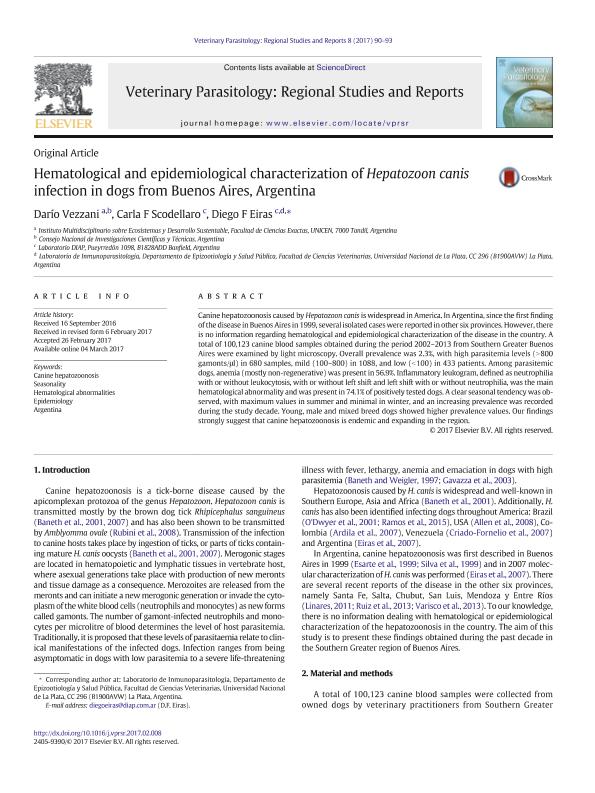Artículo
Hematological and epidemiological characterization of Hepatozoon canis infection in dogs from Buenos Aires, Argentina
Fecha de publicación:
05/2017
Editorial:
Elsevier Science
Revista:
Veterinary Parasitology: Regional Studies and Reports
ISSN:
2405-9390
Idioma:
Inglés
Tipo de recurso:
Artículo publicado
Clasificación temática:
Resumen
Canine hepatozoonos is caused by Hepatozoon canis is widespread in America. In Argentina, since the first finding of the disease in Buenos Aires in 1999, several isolated cases were reported in other six provinces. However, there is no information regarding hematological and epidemiological characterization of the disease in the country. A total of 100,123 canine blood samples obtained during the period 2002–2013 from Southern Greater Buenos Aires were examined by light microscopy. Overall prevalence was 2.3%, with high parasitemia levels ( 800 gamonts/μl) in 680 samples, mild (100–800) in 1088, and low ( 100) in 433 patients. Among parasitemic dogs, anemia (mostly non-regenerative) was present in 56.9%. Inflammatory leukogram, defined as neutrophilia with or without leukocytosis, with or without left shift and left shift with or without neutrophilia, was the main hematological abnormality and was present in 74.1% of positively tested dogs. A clear seasonal tendency was observed, with maximum values in summer and minimal in winter, and an increasing prevalence was recorded during the study decade. Young, male and mixed breed dogs showed higher prevalence values. Our findings strongly suggest that canine hepatozoonosis is endemic and expanding in the region.
Archivos asociados
Licencia
Identificadores
Colecciones
Articulos(CCT - TANDIL)
Articulos de CTRO CIENTIFICO TECNOLOGICO CONICET - TANDIL
Articulos de CTRO CIENTIFICO TECNOLOGICO CONICET - TANDIL
Citación
Vezzani, Dario; Scodellaro, Carla F; Eiras, Diego Fernando; Hematological and epidemiological characterization of Hepatozoon canis infection in dogs from Buenos Aires, Argentina; Elsevier Science; Veterinary Parasitology: Regional Studies and Reports; 8; 5-2017; 90-93
Compartir
Altmétricas




